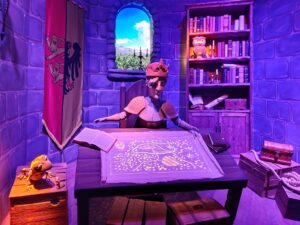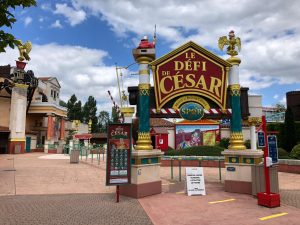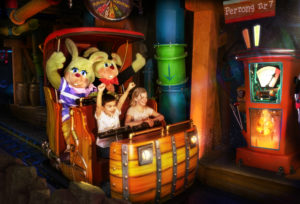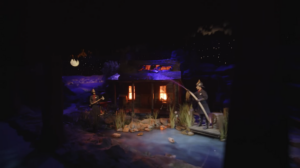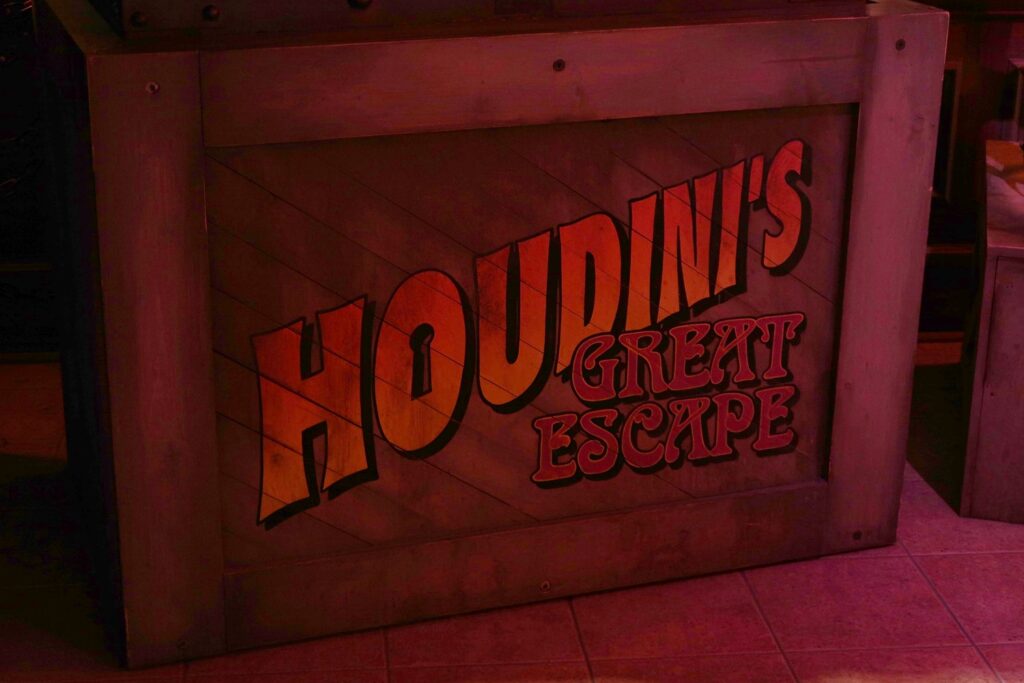
A good show ride can be just as immersive as a good dark ride. This is especially true for one one of the most famous show rides: the Madhouse. In the earlier parts of our Madhouses special, we looked into the origin of the Madhouse, the Haunted Swing, and the development of the very first modern Madhouse: Villa Volta. In the conclusion of this trilogy, we look backstage at another of the currently operating Madhouses to see how such a ride actually works and will take a look at the further developments of the attraction.
The development of the first modern Madhouse, Villa Volta, was initiated by Efteling. The park turned to Vekoma, a Dutch manufacturer, for the technical development of the ride, though the concept was not really new for them. Vekoma had already hinted at their own modern incarnation of the attraction in one of their newsletters in 1994, but they were not close to actually producing it. Developing such a ride is very costly and the Efteling and Vekoma came to an agreement. Peter van Bilsen, Executive Vice President of Vekoma, recalled: “We developed the ride as a standard attraction. We took a share in the development costs in cooperation with the Efteling in order to put this attraction on the market.”
In the case of Villa Volta, Ton van de Ven and the decoration department of Efteling were responsible for the artistic design and theming of the attraction, while Vekoma worked on the technical design. When the attraction opened, it was one of the most immersive and technically advanced show rides in the world; much more advanced than the Haunted Swings that were still in operation. Vekoma called the attraction ‘Madhouse’ and was able to manufacture over 15 installations worldwide after the success of Villa Volta. One of these installations is located in the Belgian theme park Bellewaerde Park (Ypres – Belgium) and is called Het Magische Huis van Houdini (The Magical House of Houdini). Team DRdb was able to take a backstage look at the workings of this particular Madhouse.
The Story of the Magical House of Houdini
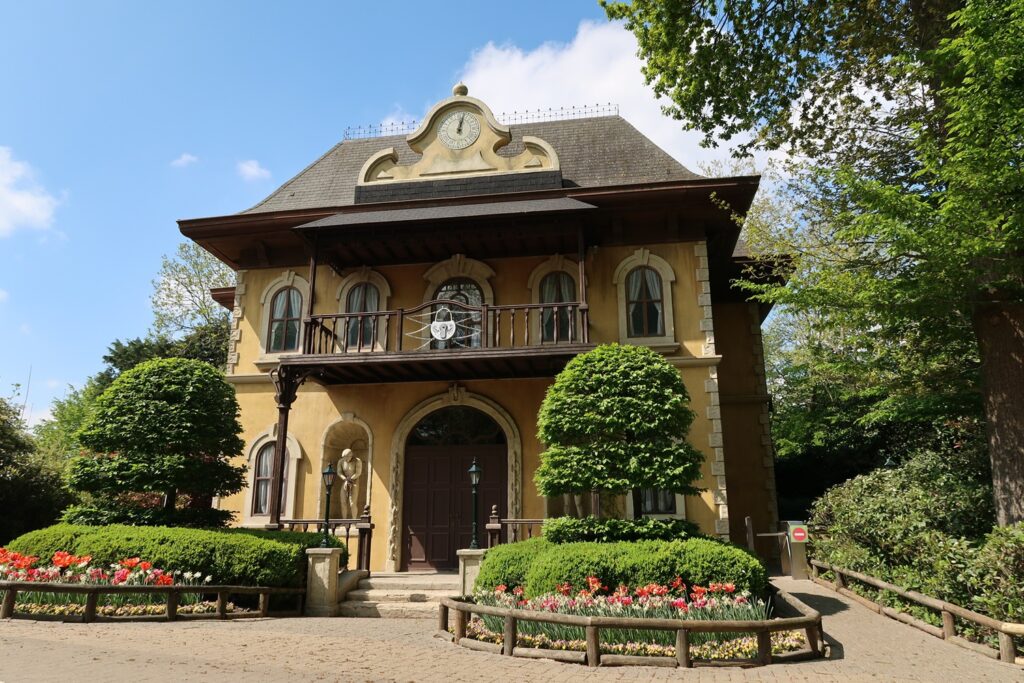
Het Magische Huis van Houdini (previously called ‘Houdini’s Magical House’ or simply ‘Houdini’) opened in 1999 and is one of the 5 oldest Madhouses in operation. The story revolves around illusion and the legendary illusionist Harry Houdini. Before we take a look backstage, we will first describe what the ride experience is like.
Readers who have visited either Six Flags Great Adventure or Six Flags New England might find this a familiar theme. Premier Parks (later Six Flags Inc.) installed three madhouses of the same theme to open in the 1999 season. One of these was placed in Great Adventure, as Houdini’s Great Escape; one in New England as Houdini – The Great Escape; and a one in Bellewaerde Park, which was owned by Premier Parks at the time.
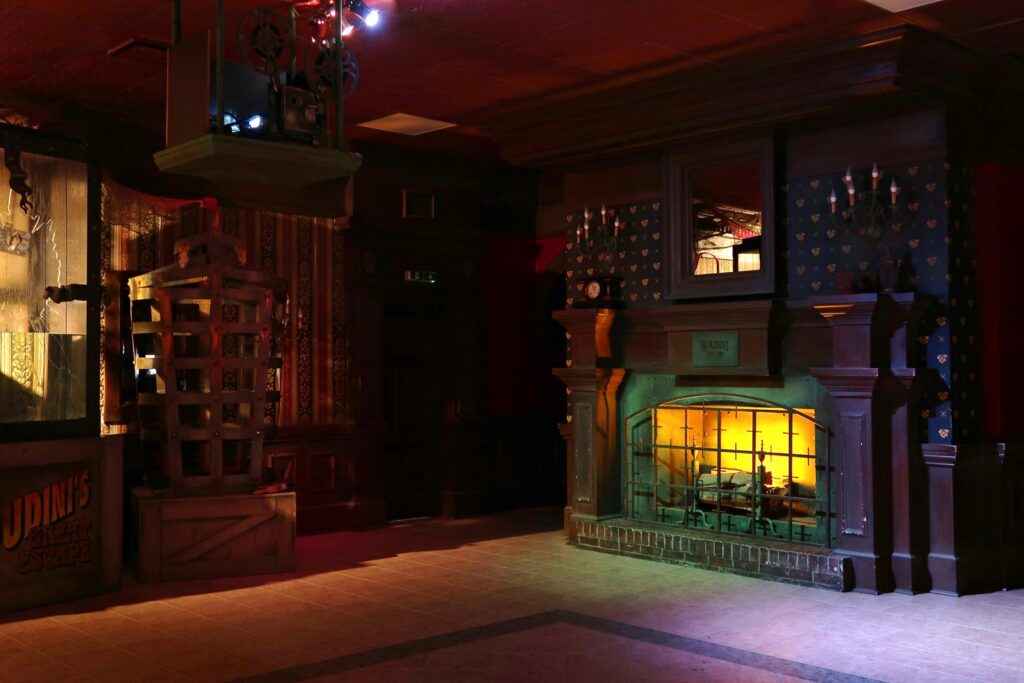
Visitors of the Magical House of Houdini will enter the sheltered queue on the left side of the building, before entering the building through the back. The first room they enter is the large pre-show room, resembling the living room of this mysterious mansion. The room itself has a classical style. There are multiple cabinets against the walls and a large fireplace in the centre. There is no furniture to be found in this room. Instead, there are some strange boxes standing on one side of the room. One filled with water, another completely closed off by chains. These are the boxes that Houdini used to escape from during his shows.

Once all guests have entered the room, the pre-show starts by lowering a projection screen from the ceiling above the fireplace. The pre-show itself mainly consists of a video projection of alleged footage of a young Houdini, master of illusions. It shows Houdini performing a trick for the people in his neighbourhood, baffling his neighbours when he magically escapes from a locked chest.
After the trick is over, the screen turns black and the atmosphere in the room starts to change. Strange things begin to happen: Houdini’s cabinets seem to come to life. Chains start rattling and the water begins to bubble. With a large flash and a clap of thunder everything turns to silence and a portrait of Houdini appears in a mirror above the fireplace. Suddenly, Houdini’s voice sounds in the room: “Come on in. Nothing on earth can stop me”.
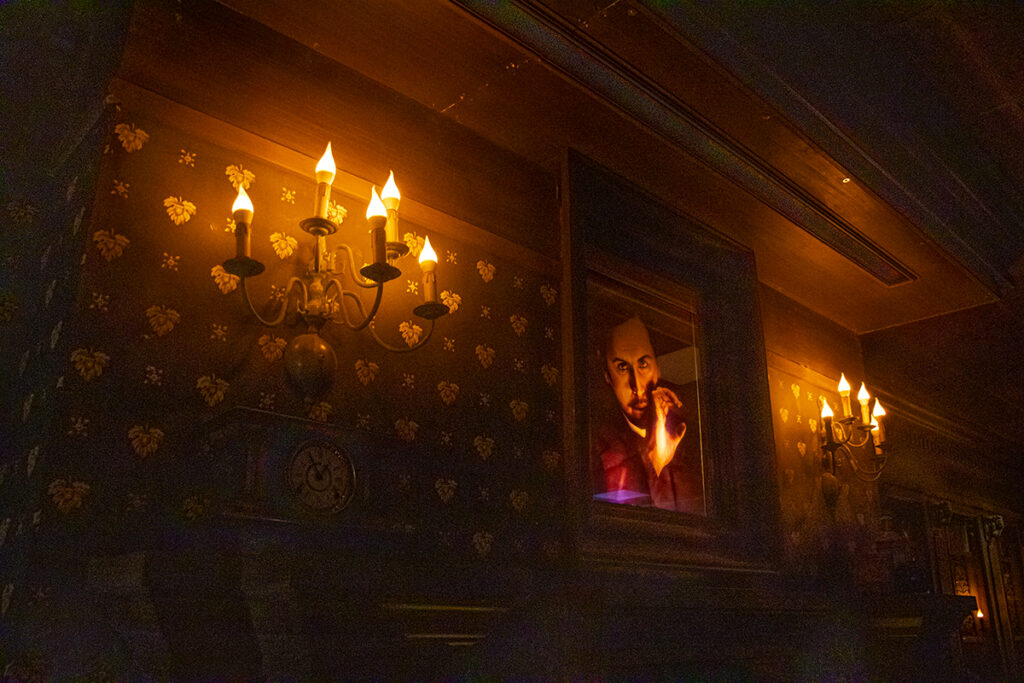
Houdini invites the guests to be part of his next trick. Two doors, one on each side of the fireplace, open up and everyone moves on to the next room that contains the main show. All guests take a place on one of the four large benches, which can hold up to 78 people combined.
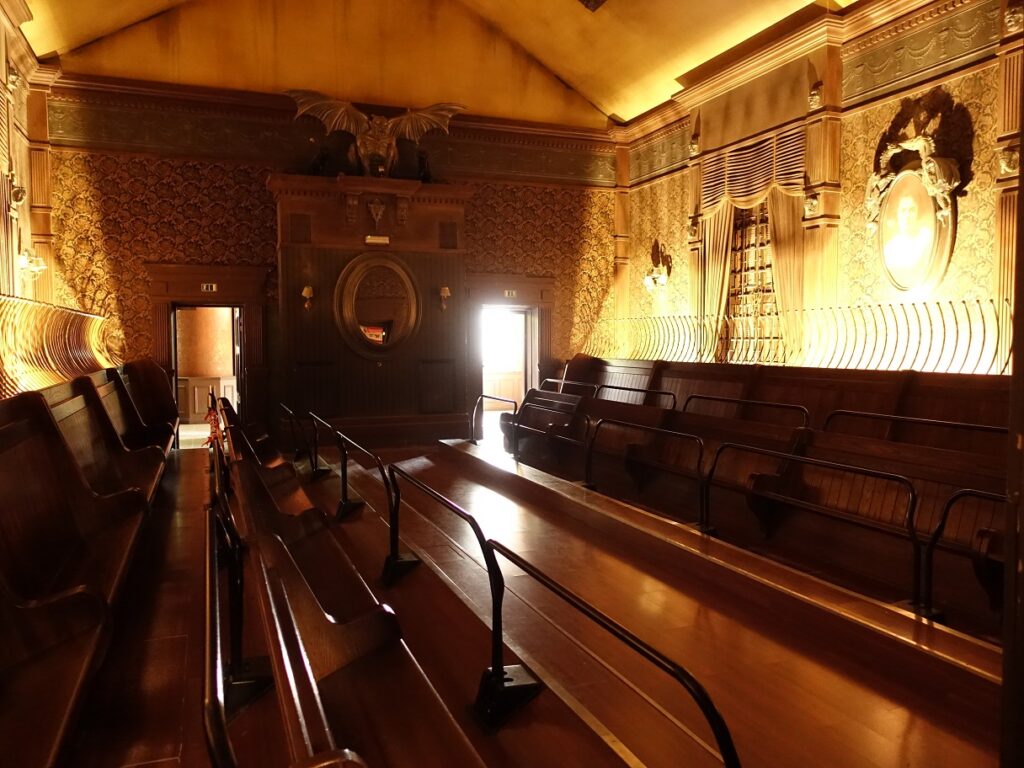
When every guest is seated and the lap bars are lowered, the doors of the room are locked. Houdini’s guests are trapped inside his latest trick and need to find the key to escape. Gravity seems to shift and the room starts to spin. Soon, up will be down and down will be up. This whole illusion is set to a mix of tracks from Ennio Morricone’s soundtrack for The Mission, combined with sound effects of screams and Houdini’s laughter.
At the climax of the attraction, the room will stop spinning and hold still upside down for a moment. We can hear Houdini say: “This illusion becomes a nightmare”, before the keys are revealed in the mirrors on either side of the gondola. The room and gravity return to normal. Right before the doors to the exit open up, we can hear Houdini one last time: “What you think that you see, is not what it seems. That is illusion”.
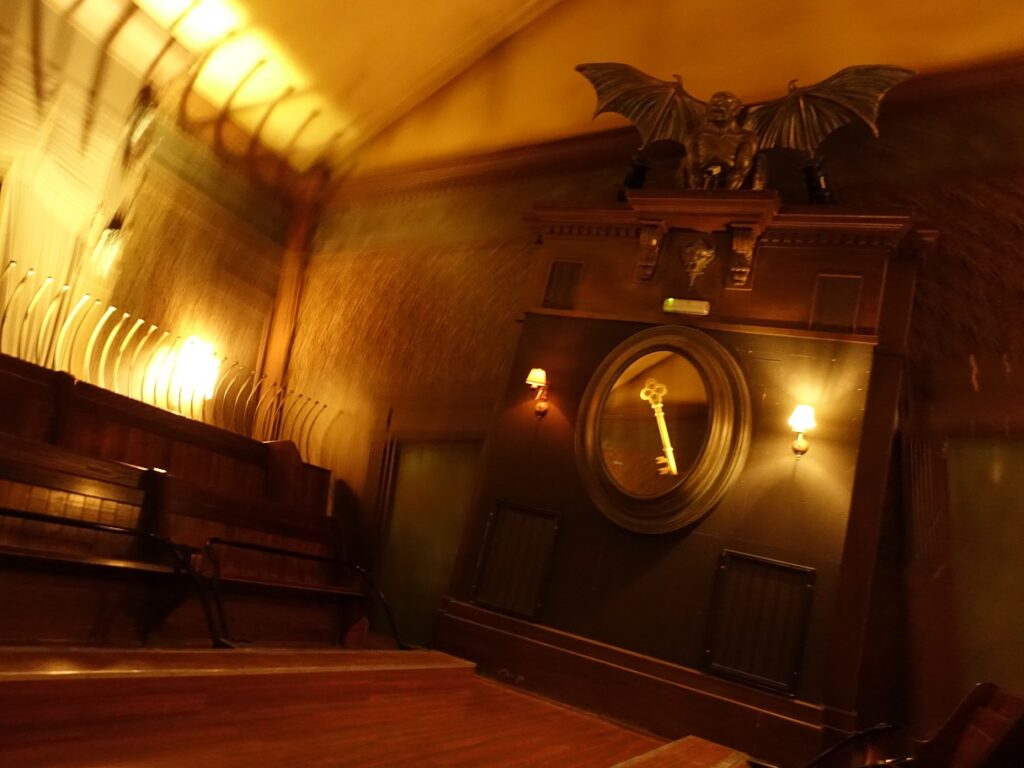
Creating the illusion
Now we have taken a look at the regular guest experience of Houdini, it is time to take a look backstage at the workings of the ride. Bellewaerde Park was kind enough to welcome Team DRdb for a complete behind the scenes tour. We were guided around by Geert Lernout, technical director of Bellewaerde Park. He showed us how the attraction works and explained how it is operated.
In essence, the illusion of the Madhouse is not any different from the Haunted Swing. The attraction consists of a swinging gondola inside a rotating drum. To keep up with the illusion, the drum of a Madhouse is not visible from the outside. Instead, it is located inside a much larger room of the building, which can be referred to as the machine room.
Whoever enters the main show of a Madhouse with a keen eye, can spot the double walls when entering the main show. The first for the machine room, the second for the drum of the attraction.

Unlike the Haunted Swings we’ve seen in the first part, Vekoma’s Madhouse does not have a cubic or even pentagonal shaped room. Instead, they designed the drum with a hexagonal shape. This shape allows for a smaller revolving circle (and thus can be placed inside a smaller building), but also creates two vertical walls on each side of the gondola. This is something that the pentagonal shaped haunted swings do not have, and it allows a modern madhouse to create a more convincing interior of a living room.


The motion of the gondola is created by a system of hydraulic cylinders that can swing the gondola back and forth. These cylinders are hidden inside the two chimney-like blocks of walls on each end of the gondola. Because they can’t be easily reached, even during backstage tours, Bellewaerde Park has put up an information plaquette to explain it to visitors. The plaquette shows a drawing (that actually originated from a defunct Villa Volta fan website) which indicates where the cylinders are located (see 2 on the image above). These cylinders make a gondola of a 78-passenger Madhouse swing up to an angle of 30° on each side, but are also capable of locking the gondola in a position at any angle in between.
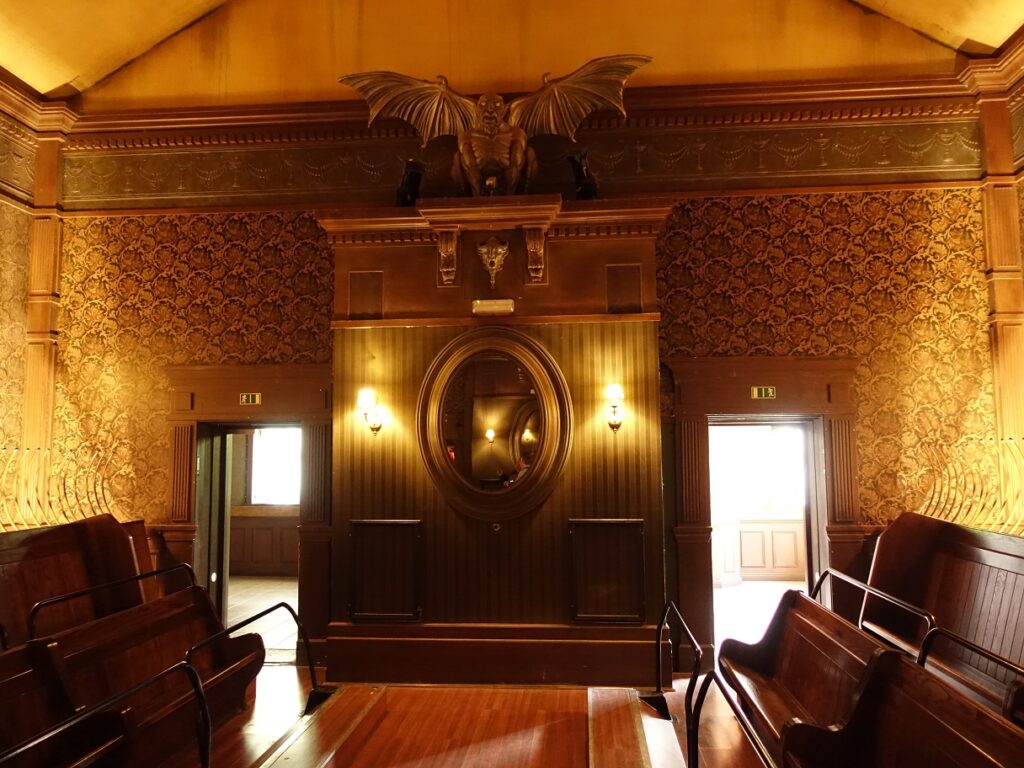
Both the drum and gondola have the same pivot-point. The mechanics of this are visible in a small room, hidden behind the fireplace of the pre-show. The gondola of a Madhouse contains restraints, safety systems and in some cases special effects. These require a constant power supply, even when the gondola is tilted. Older madhouses, like Houdini, have a cable on a reel that will unwind and wind during the ride. This is an efficient way to distribute the power to the gondola, but it limits the movement of the drum to two full rotations in both directions. Most Madhouses, including Houdini, make about one and a half rotations in a single direction, followed by the same movements backwards.
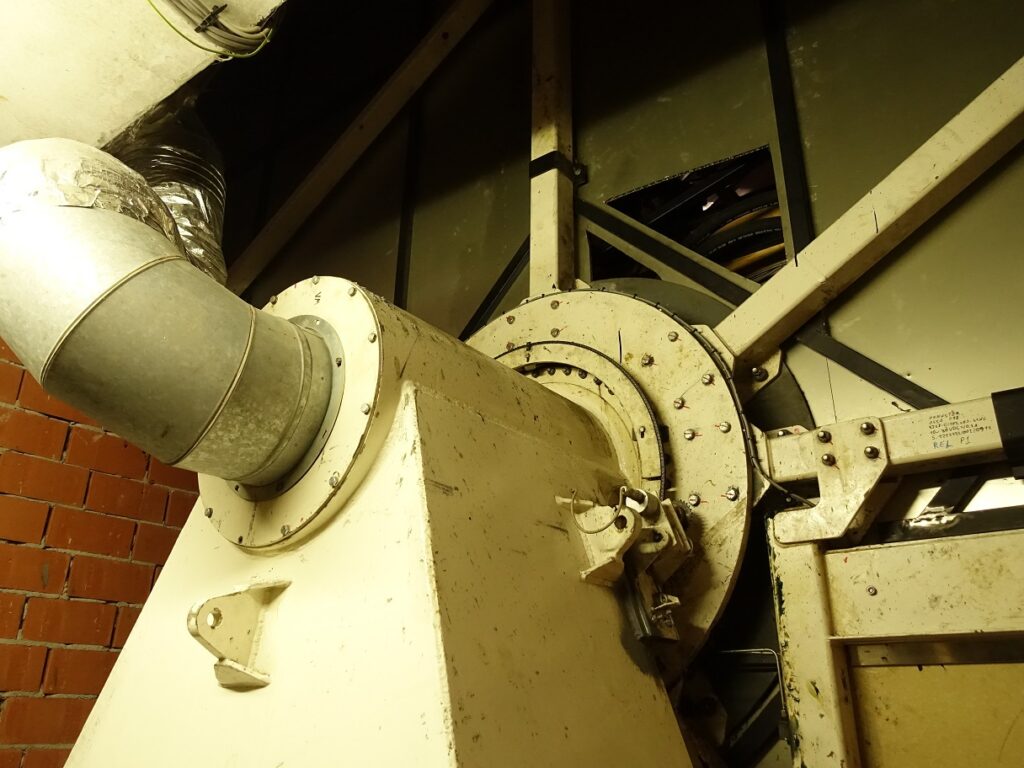
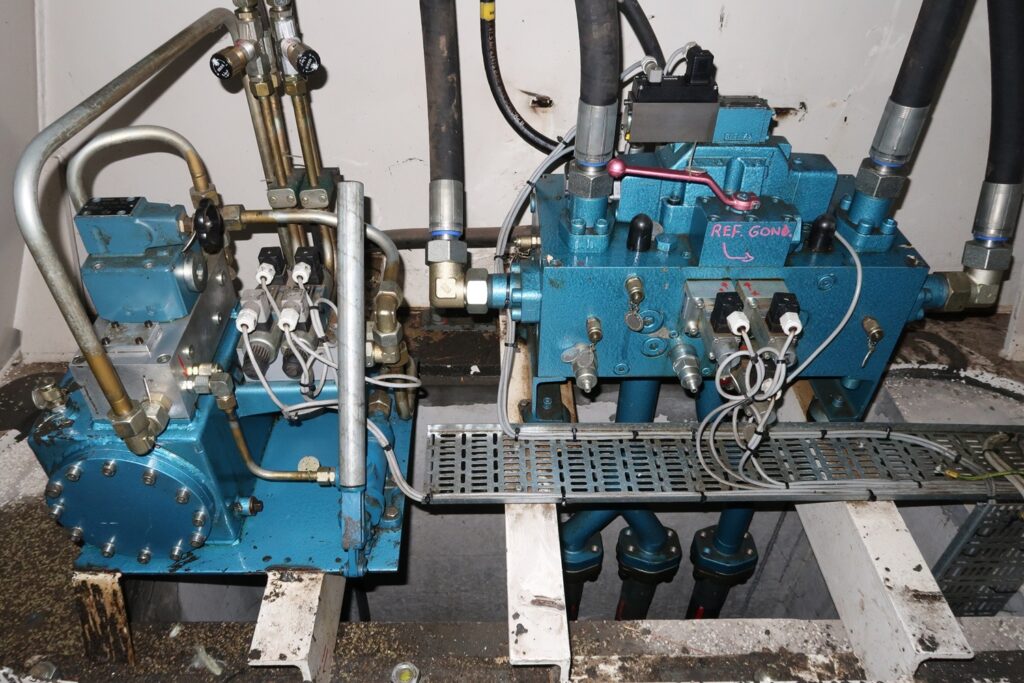
The gondola of most madhouses is placed on the same level as the ground floor. Since the drum goes lower than the gondola, to allow for the drum’s turning circle, this means that the machine room is a lot lower. It is accessible through the basement of the building.
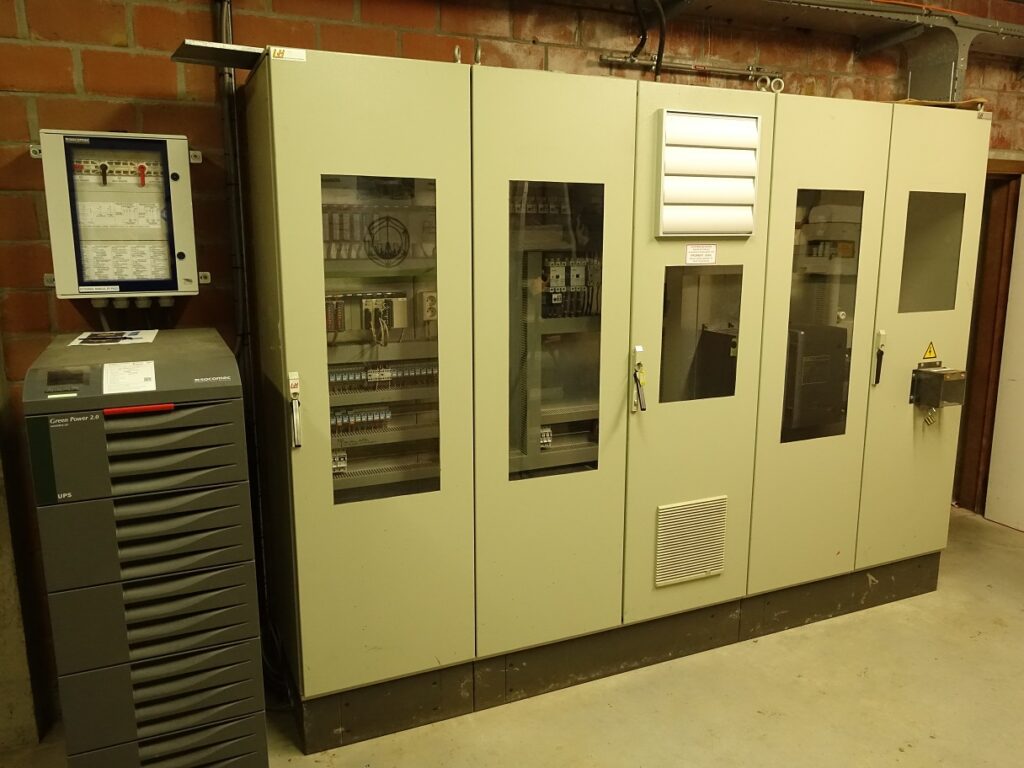
A large ride like a Madhouse obviously needs a lot of power. The first thing we passed on our way to the machine room were the power supply and server cabinets. The servers contain the programming of the attraction. The program of each ride cycle of Houdini is exactly the same. After a quick stop at the servers, we made our way to the machine room.

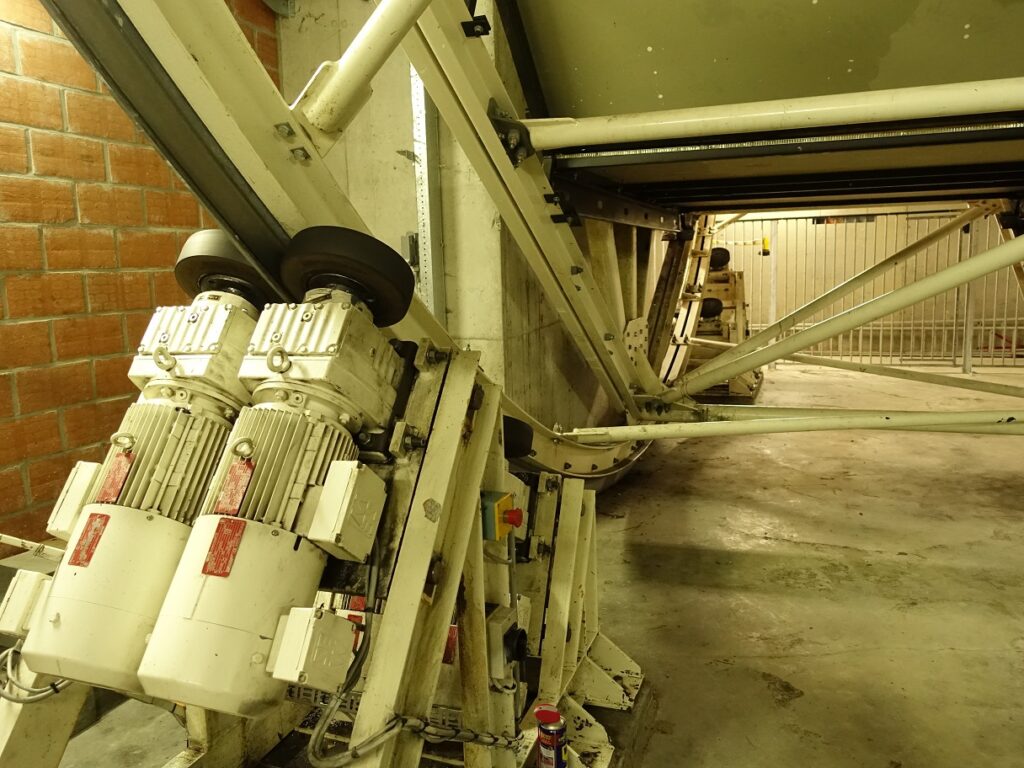
When entering the machine room, the size of the drum is impressive. It consists of a steel framework in hexagonal shape of which guests can only see the inside. At one side of the drum, the corners of the hexagon are all connected to a large wheel. This wheel is used to rotate the drum, powered by eight motors, four on each side. “To put the drum and gondola in motion was one thing, but being able to handle all the theming was a larger challenge”, recalls Van Bilsen, “The weight of theming had to be taken in account from the very start of the development.”
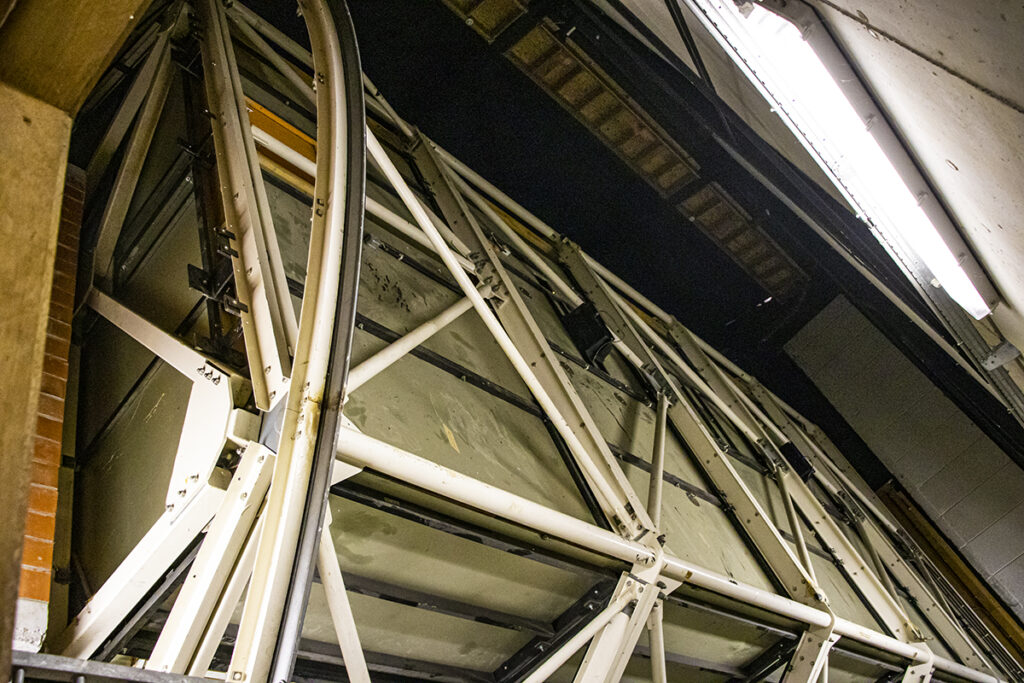
Photographs show a lot, but it’s nothing compared to moving pictures. Watch the video below to see what the attraction looks like from the engine room!
Operating the magic
After a look at all the technical installations of the attraction, Geert took us to the control room and explained to us how the ride is operated. Every morning, the attraction is inspected by the technical staff of the park. After the visual checks, they will power up the ride and run a few tests before they can hand the attraction over to the operating staff.

Houdini is always operated by at least two persons. One will stay inside the operating room to keep an eye on the security cameras, while the other will serve as the host of the attraction. This person will open the doors to the pre-show to let a maximum of 78 people inside. The door to the operator room is located right between Houdini’s boxes and one of the doors leading towards the main show.
The host usually returns to the control room when the pre-show has just started, but once the doors to the main show open, he or she will be back to guide the guests to their seats. The host will perform safety checks and signal their colleague in the control room to close the restraints. When everybody is seated, the host will leave the main show and head back towards the control room. The doors will close and the ride will start.
The ride is supervised by multiple security cameras which are visible in the control room. Two of these cameras are located inside the main show, one on each side of the gondola. These two wide-angle cameras will give the operators a clear view on what’s going on inside. They can monitor all guests on board.
Once the ride is finished, the exit doors open automatically. Guests usually find their way to the exit, but if not, they are still being monitored from the control room, so the operators can guide them. Soon, a new group of visitors will enter the Magical House of Houdini.
Apparently, the show cycle of the pre- and main show is important at Houdini. If the pre-show is not played, the main show might not function in the correct way. In our case, we once had a ride cycle without music or sound effects playing. A weird experience.
Up or down, safety above!
Just like all amusement park attractions, Madhouses are subject to strict safety requirements. When guests are seated on a swinging gondola, inside a revolving drum, the escape routes may not always be a clear path. A number of measures have been taken to prevent guests from getting trapped in the attraction.
In the case of a power outage, a backup power system will provide the lights in the attraction with power and make sure that safety systems, like the cameras on the gondola, don’t fail. But of course, there is more to it, for example, the drum and gondola have their centre of gravity at the bottom. “The drum and gondola will always return to the standard position where guests can leave the attraction,” tells Van Bilsen, “We managed to design the hydraulics in a way that the gondola will always return in the centre. That was one of the most important things during the design.” If even that does not happen automatically, the technical team has to return them manually with special tools, such as manual hydraulic pumps.
In all of the previous cases, guests will eventually be able to leave the attraction through the regular exits. Vekoma has foreseen however that there might still be a very slight chance of the gondola or drum being stuck and that the use of the regular exit is not an option. “If that all does not work, there are emergency hatches built in the drum. That’s basically the third pillar of evacuation,” tells Van Bilsen. The hatches he is talking about are usually hidden in the theming, but they are clearly visible from the outside of the drum. For when time really matters, there is even an axe located next to the escape hatches. To this day, there is no knowledge of these escape hatches ever being used to evacuate any Madhouse. So far, the other safety measures have always been sufficient.


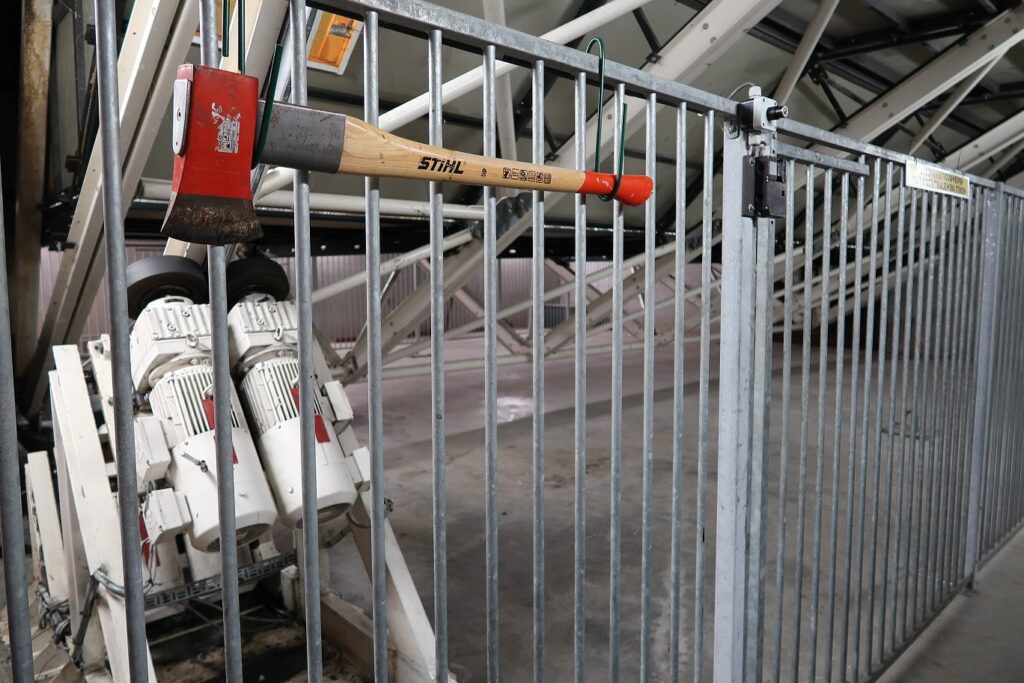
Developments 2.0
The first variation of the Madhouse debuted only a couple months after the opening of Villa Volta. The Haunting in Drayton Manor (Tamworth, United Kingdom) had been developed simultaneously with Villa Volta. This Madhouse is a smaller, 40-seat version. “Changing the design wasn’t that hard. We just made it into a smaller version and we were done,” says Van Bilsen. The gondola of the attraction consists of 4 benches for 10 guests, resulting in a much shorter drum. The diameter of the drum has also been decreased. The workings of this smaller Madhouse remain the same, although the swinging of the gondola is limited to 15° to each side.

Over the next few years, Vekoma sold and manufactured multiple ‘large’ installations, making this the standard size of the attraction. It wasn’t until 2003 when they installed a second 40-seat version: Verlies des Grauens in Belantis (Leipzig, Germany).
Vekoma pretty much delivered a finished product with Villa Volta and The Haunting. After their debut, they were able to sell and manufacture about 10 installations, before making any large changes to the designs. Van Bilsen explains: “On the basis it is quite a simple ride. We didn’t have to make that many changes. Though we did add a wheel of sliding contacts at Phantasialand.” Feng Ju Palace at Phantasialand (Brühl – Germany), which opened in 2002, was the first Madhouse where the reel with (power) cables was replaced by a wheel of sliding contacts. This makes Feng Ju Palace the first Madhouse to be able to make unlimited rotations in one direction although it does not utilise this feature in its programming.
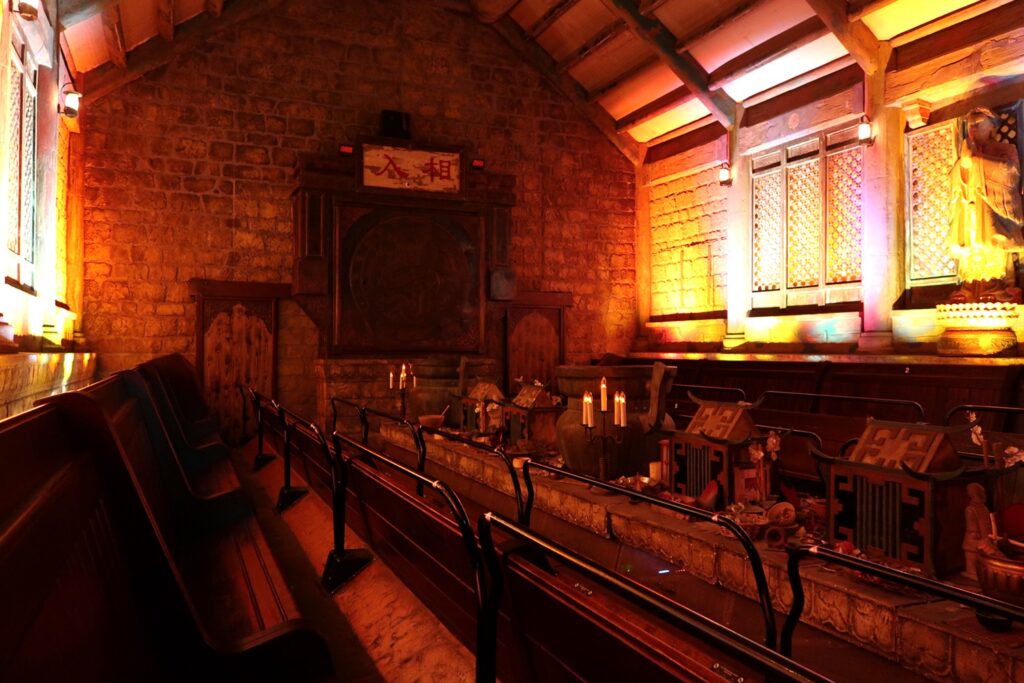
More changes to the technical design came in 2019 with the opening of Haunted House Monster Party in Legoland Windsor. “In this new version we took the more weight of theming into account. That’s a significant change. We also worked with the latest technical installations, engines and ride control. We now call it Madhouse 2.0.” The new version of the Madhouse certainly is a lot smoother.
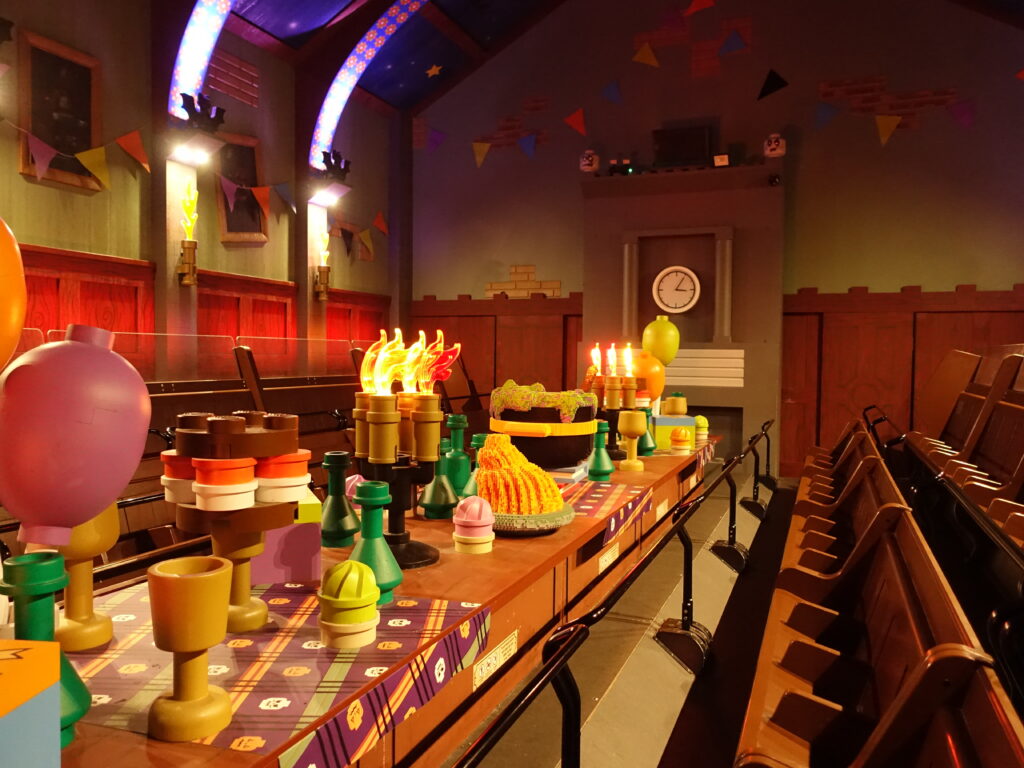
Up to now, Haunted House Monster Party is the only Madhouse 2.0 in operation. However, during our interview Peter was able to tell us that new installations are on the way, but could not confirm any locations. By now, we are able to tell that one of these is intended for Legoland California.
The success and competition
Nowadays, Vekoma mainly manufactures roller coasters and a show ride like a Madhouse is somwhat considered as a side project. However, Van Bilsen can proudly look back at the development of the Madhouse: “For this type of attraction, 15 installations is a success. With the amount of theming that is required for such a ride, it becomes just as expensive as a big roller coaster.”
Success hardly comes alone. It usually comes with competition and Vekoma got theirs when Europa-Park (Rust – Germany) opened Fluch der Kassandra in 2000. The ride was designed and manufactured by Mack Rides (both Mack Rides and Europa-Park are owned by the Mack family). Mack Rides called their version the Mystery Swing.
While similar in ride experience, the most obvious differences between a Madhouse and Mystery Swing are the sizes. With 52 seats, the Mystery Swing is right in the middle of the two Madhouse sizes of Vekoma. Also, the Mystery Swing consists of an octagonal shaped drum. Although it is not completely sure, it is expected that the Mystery Swing works in a similar way as the Madhouse. Fluch der Kassandra even has a little extra trick upon its sleeve with some sort of back poking device in the seats.
With only four installations, Mack Rides’ Mystery Swing was not as successful as Vekoma’s Madhouse. From those four, only two are still in operation as a Madhouse (Fluch der Kassandra and Défi de César in Parc Astérix (Plailly – France)). One was converted into an interactive theatre (Lenny’s Magic School in Everland (Yongin-si – South Korea).
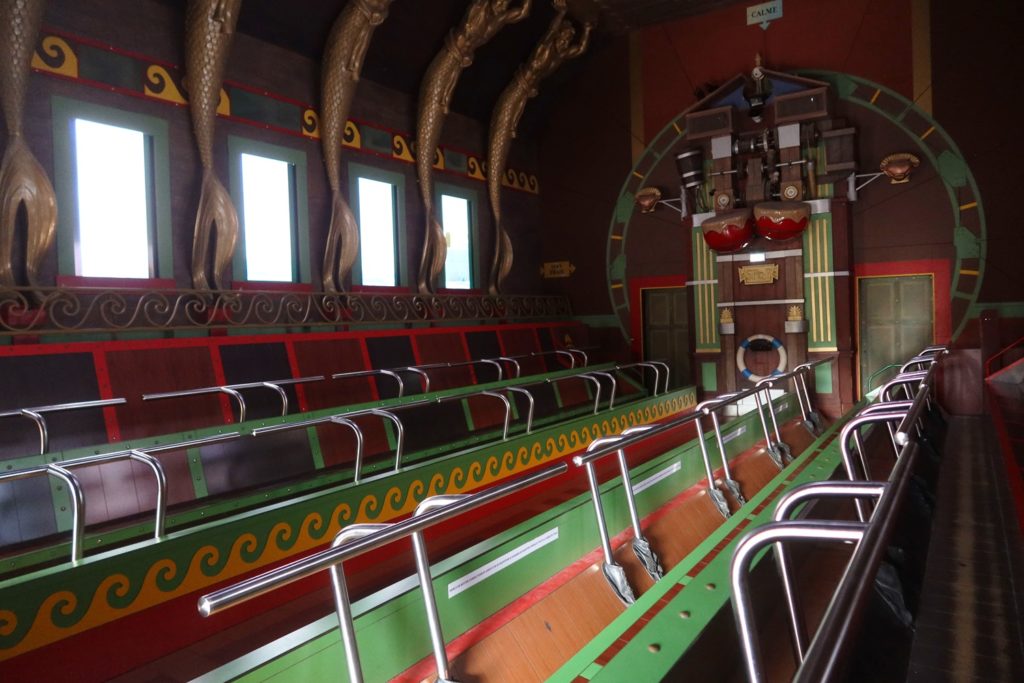
The past, present and future
It is impressive that a 125 year old illusion still works in this modern digital age. Amariah Lake’s Illusion Apparatus has made a clear mark on the amusement industry. Not only is the Haunted Swing considered to be the oldest show ride in the world, it was also one of the very first immersive ride experiences. Visitors that entered his attraction would leave the outside world behind them and enter one that would turn it all upside down.
Even though the experience was soon downgraded into a carnival ride, it is not hard to understand what legendary Efteling designer Ton van de Ven saw in the concept. Together with Vekoma, they developed an attraction that soon became a signature ride for Efteling.
Vekoma was able to put the Madhouse on the market and soon, it became an attraction that can be enjoyed all over the world. The attraction still amazes visitors, especially those who experience it for the first time.
There are endless themes that could fit a Madhouse and we are very curious to see where those new installations that Van Bilsen hinted at will be located, as well as what stories they will tell. We would like to thank Peter van Bilsen of Vekoma and Geert Lernout of Bellewaerde Park again for their cooperation on this article. And remember, it is only an illusion!
© Dark Ride Database
Article written by Erik
Pictures by Erik, Jim, Luc & Quintus, unless indicated otherwise.

